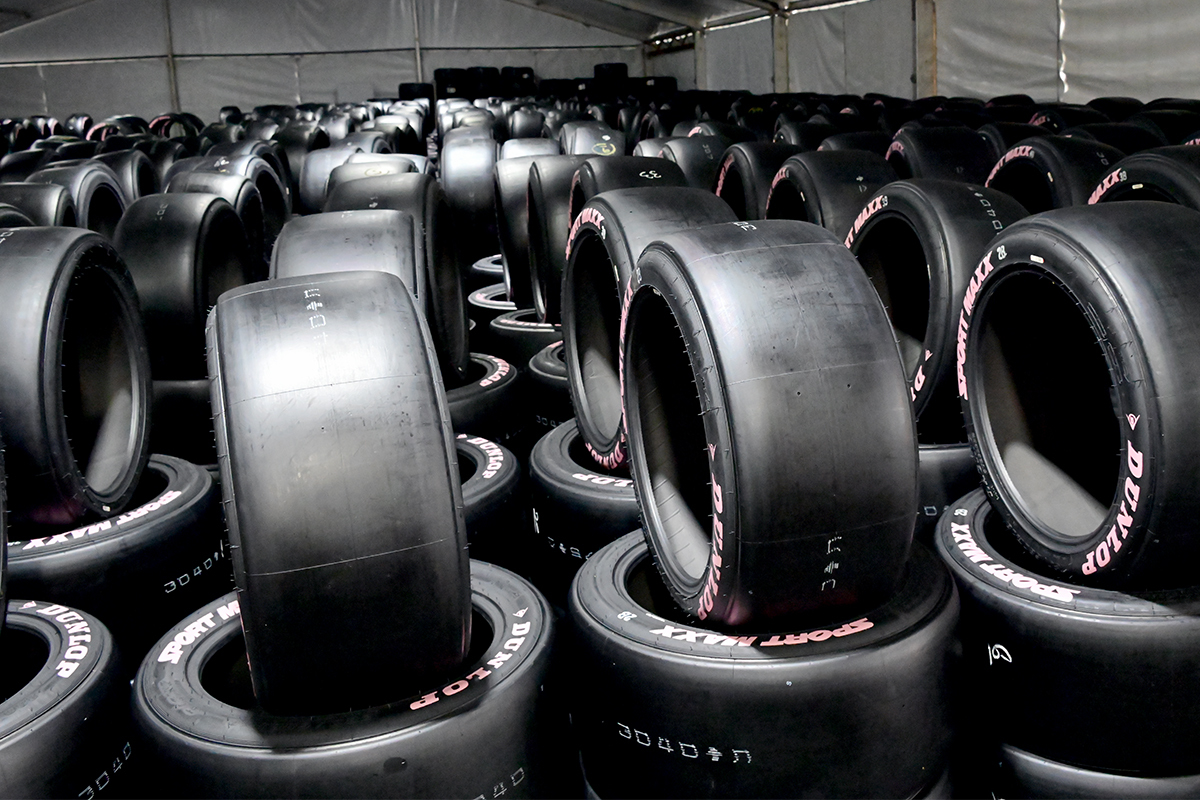

Supercars uses too many tyres and needs to cut back to save the planet whilst improving the racing!
And before I get the calls from everyone, I acknowledge that I’ve often been the first person to say that we shouldn’t skimp on tyre numbers as part of ensuring we have good racing, but the world is moving on and we have to move with it.
We can’t expect to live in a bubble and stakeholders including fans, sponsors, and governments will increasingly want to understand our commitment to a more sustainable world. Tyres are arguably the biggest single potential performance differentiator on a race car if they’re allowed to be ‘free’.
As older readers will know, in the days before control tyres were introduced into Supercars, a team and driver’s race results (and even complete season) could often be predetermined purely through which brand of tyre they were using.
Today, as since 1999, Supercars uses a control tyre, currently Dunlop of course, and therefore all teams and drivers start on an equal footing, but tyres remain a potentially major performance differentiator by virtue of the need to maximise the use of a tyre over a given distance.
Over the last decade or so (since 2009, in the case of Supercars) we have increasingly seen tyres used by category owners to try to improve the racing spectacle by mixing compounds up and attempting to increase the rate of tyre degradation to create larger performance differences from car-to-car and driver-to-driver.
In most cases, this action is really best described as putting a ‘Band-Aid’ over the real issues (for instance, increasingly well-developed aerodynamic packages) that have led to poor racing spectacles and reduced overtaking.
This has also led to large increases in the numbers of tyres being made and consumed by the industry as a whole, not least Supercars.
It has also led the drivers in many categories (including Formula 1 and Supercars) driving to the performance of the tyre rather than flat-out – and frankly the spectacle sometimes isn’t any better than it would have been anyway, save for the need for more pit stops. And pit stops often don’t alter the result as everyone is pretty good at executing them and also running strategies to minimise the effect of tyre degradation.
For the 2022 season, the allocation of new slick tyres for each main series Supercar is over 400 for 13 race weekends.
That includes 52 new tyres for Bathurst to which a team can add a further eight pre-marked tyres for a total of 60 slick tyres for the whole event. By comparison, the Bathurst 12 Hour rules allow a competitor a maximum of 48 new slick tyres for the whole event (no pre-marked tyres allowed) – and the race itself is normally double the length of the Bathurst 1000, give or take.
In 2008 (the last year before the advent of the soft tyre option at some events) the season-long Supercars figure was 264 new slick tyres for 15 events.
The bottom line is that Supercars is using a shed-load of tyres! In an era that is increasingly looking at sustainability as a key issue, in motorsports as well as the rest of life, that’s not good.
Apart from fuel (and Supercars has an excellent record around the use of largely sustainable fuel dating back to 2009), tyres represent the ultimate consumable in our world and therefore will be in the spotlight going forward.
There’s an answer to this whereby we can probably not only reduce the number of tyres we use in Supercars, but also improve the quality of the racing. Yes, we can have our cake and eat it!
The top drivers have long argued that the current Control tyre (of whatever compound) doesn’t allow as much close racing as they’d like because the surface of the tyre quickly overheats when running in the wake of another car.
The current tyre can trace its lineage a long way back and it’s a fact that many more recent constructions of tyre are better suited to close racing than the one we use today. Dunlop themselves, as the current supplier, has such tyres and is well-versed with their capabilities.
Combine a more modern construction of tyre with a race car that has far less aerodynamic downforce than the current car and, hey presto, we might just have a combination that then doesn’t need us to use overly soft tyre compounds to attempt to spice up the racing.
Sounds like Gen3 to me.
What’s more, Dunlop and Supercars have already tested, on Gen3, a tyre with the potential to provide this.
The other side of such a tyre is that it will inevitably cost considerably more than the current one (the current one is an absolute bargain in reality), but if we could cut the tyre numbers in half, then that would negate much, if not all, of the increase in per unit cost.
Teams would also benefit from having to carry far fewer wheels and store far fewer used tyres in their practice banks. Bear in mind that each wheel is fitted with a pressure sensor these days which also adds to the cost of the wheel inventory.
We can still have mandated pit stops and wheel changes, but we can manage that with a much smaller number of tyres just as we used to do 15 years ago. Tyres with similar characteristics to a GT tyre, for instance, regularly cover 300 kilometres, or double the useful mileage of one of our current hard compound tyres.
If the racing is good with Gen3 without the use of artificial aids like overly soft tyre compounds, then we can reduce waste and increase sustainability – back to how it used to be.
Last weeks’ Roland’s View: Phillip Island needs a birthday and now.





















Discussion about this post